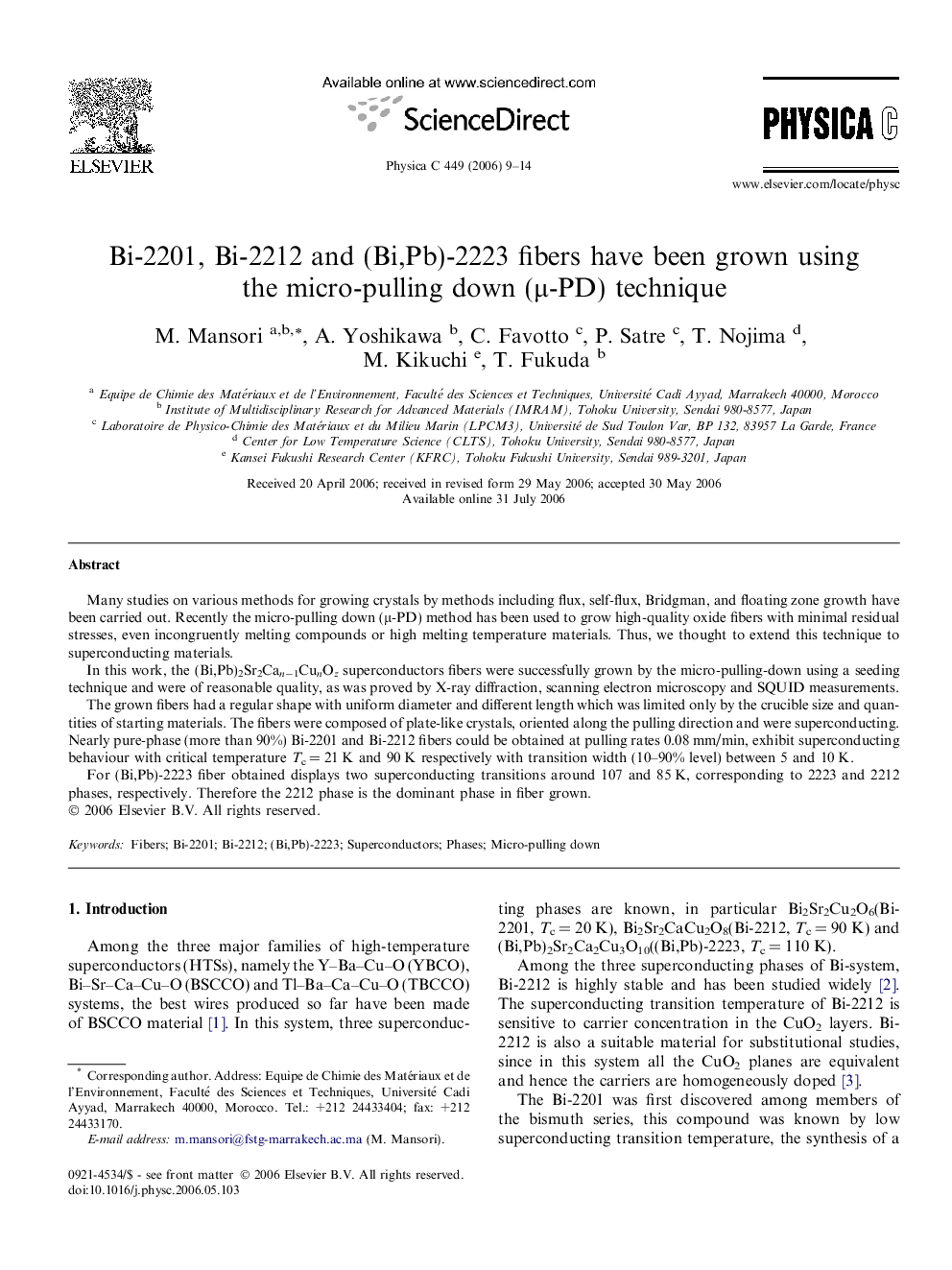| Article ID | Journal | Published Year | Pages | File Type |
|---|---|---|---|---|
| 1820513 | Physica C: Superconductivity and its Applications | 2006 | 6 Pages |
Many studies on various methods for growing crystals by methods including flux, self-flux, Bridgman, and floating zone growth have been carried out. Recently the micro-pulling down (μ-PD) method has been used to grow high-quality oxide fibers with minimal residual stresses, even incongruently melting compounds or high melting temperature materials. Thus, we thought to extend this technique to superconducting materials.In this work, the (Bi,Pb)2Sr2Can−1CunOz superconductors fibers were successfully grown by the micro-pulling-down using a seeding technique and were of reasonable quality, as was proved by X-ray diffraction, scanning electron microscopy and SQUID measurements.The grown fibers had a regular shape with uniform diameter and different length which was limited only by the crucible size and quantities of starting materials. The fibers were composed of plate-like crystals, oriented along the pulling direction and were superconducting. Nearly pure-phase (more than 90%) Bi-2201 and Bi-2212 fibers could be obtained at pulling rates 0.08 mm/min, exhibit superconducting behaviour with critical temperature Tc = 21 K and 90 K respectively with transition width (10–90% level) between 5 and 10 K.For (Bi,Pb)-2223 fiber obtained displays two superconducting transitions around 107 and 85 K, corresponding to 2223 and 2212 phases, respectively. Therefore the 2212 phase is the dominant phase in fiber grown.
